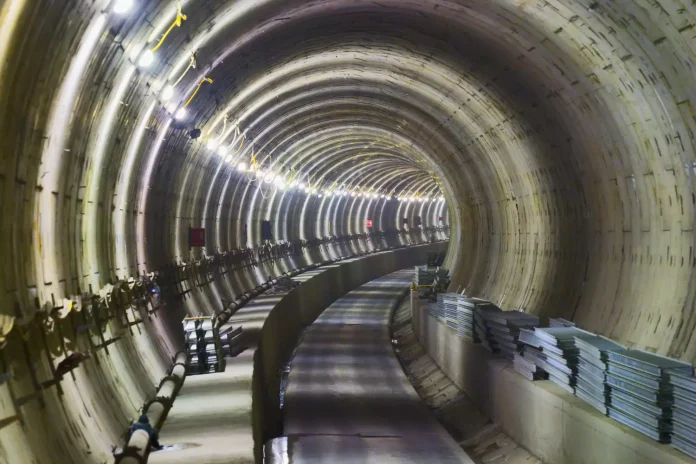The Channel Tunnel, also known as the “Chunnel,” stands as a testament to human ingenuity and perseverance. Spanning beneath the English Channel, this remarkable feat of engineering connects the United Kingdom and France, revolutionizing travel and trade between the two nations. In this blog, we delve into the impossible construction of the world’s longest undersea tunnel, exploring the challenges, innovations, and enduring legacy of this monumental project.
The idea of a tunnel linking England and France dates back centuries, but it was not until the 20th century that serious plans were put forth. The main challenge lay in the daunting task of excavating through the seabed of the English Channel, a feat that seemed almost insurmountable due to the depth, geological instability, and harsh underwater conditions.
To overcome these challenges, engineers and experts devised innovative solutions and employed cutting-edge technology. Advanced tunneling techniques, such as the use of tunnel boring machines (TBMs), were utilized to excavate through the rocky seabed. These massive machines, equipped with rotating cutter heads, allowed for precise and efficient digging while minimizing disturbance to the surrounding environment.
Safety and environmental concerns were paramount throughout the construction process. Special precautions were taken to protect workers from hazards such as flooding, cave-ins, and toxic gases. Additionally, measures were implemented to mitigate the impact on marine life and ecosystems, including the use of sound barriers and monitoring systems to reduce noise pollution and disturbance to aquatic habitats.
The construction of the Channel Tunnel was a truly international effort, requiring collaboration and cooperation between the United Kingdom and France, as well as numerous engineering firms, contractors, and suppliers from around the world. Despite political tensions and logistical challenges, the project forged strong partnerships and fostered a spirit of unity in pursuit of a common goal.
The construction of the Channel Tunnel was marked by several significant milestones and achievements. In December 1990, the breakthrough moment occurred when the two tunnel boring machines met beneath the seabed, connecting the English and French sections for the first time. This monumental achievement was followed by years of meticulous work to reinforce and finish the tunnel, including the installation of tracks, ventilation systems, and safety features.
Since its opening in 1994, the Channel Tunnel has transformed travel and trade between the United Kingdom and France, serving as a vital link for passengers, freight, and vehicles. It has facilitated economic growth, cultural exchange, and tourism, while also fostering greater connectivity and cooperation between the two nations. The tunnel stands as a symbol of human innovation and collaboration, inspiring future generations of engineers and visionaries.
The construction of the Channel Tunnel represents a remarkable triumph of human engineering and determination. Through ingenuity, perseverance, and collaboration, engineers and experts overcame seemingly impossible challenges to create one of the world’s most iconic infrastructure projects. As we marvel at the engineering marvel that is the Channel Tunnel, we are reminded of the boundless possibilities that arise when humanity dares to dream and work together to achieve the extraordinary.























